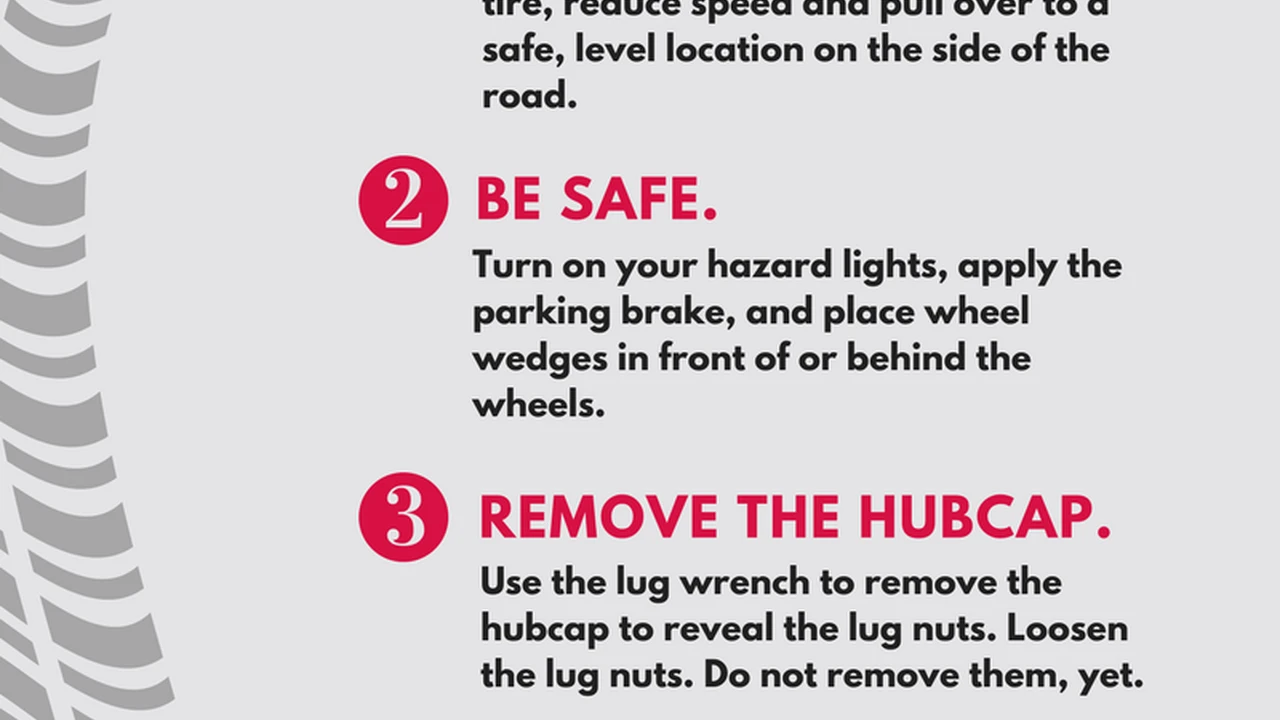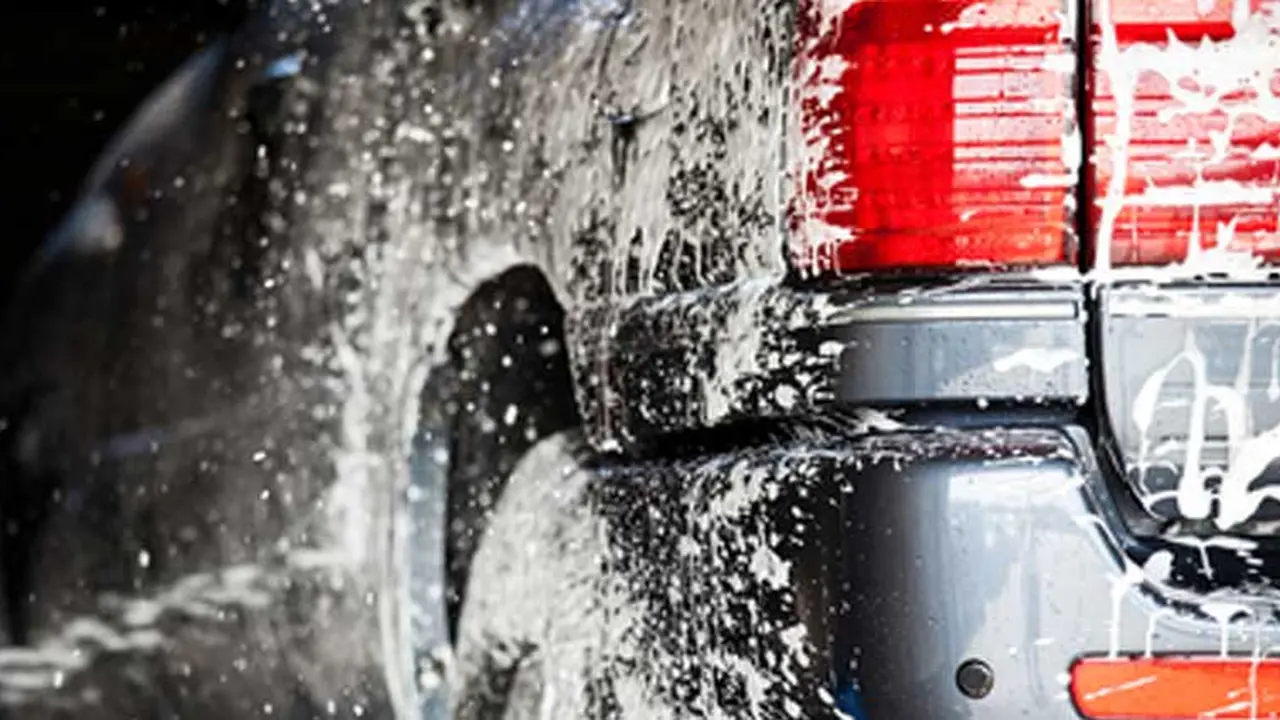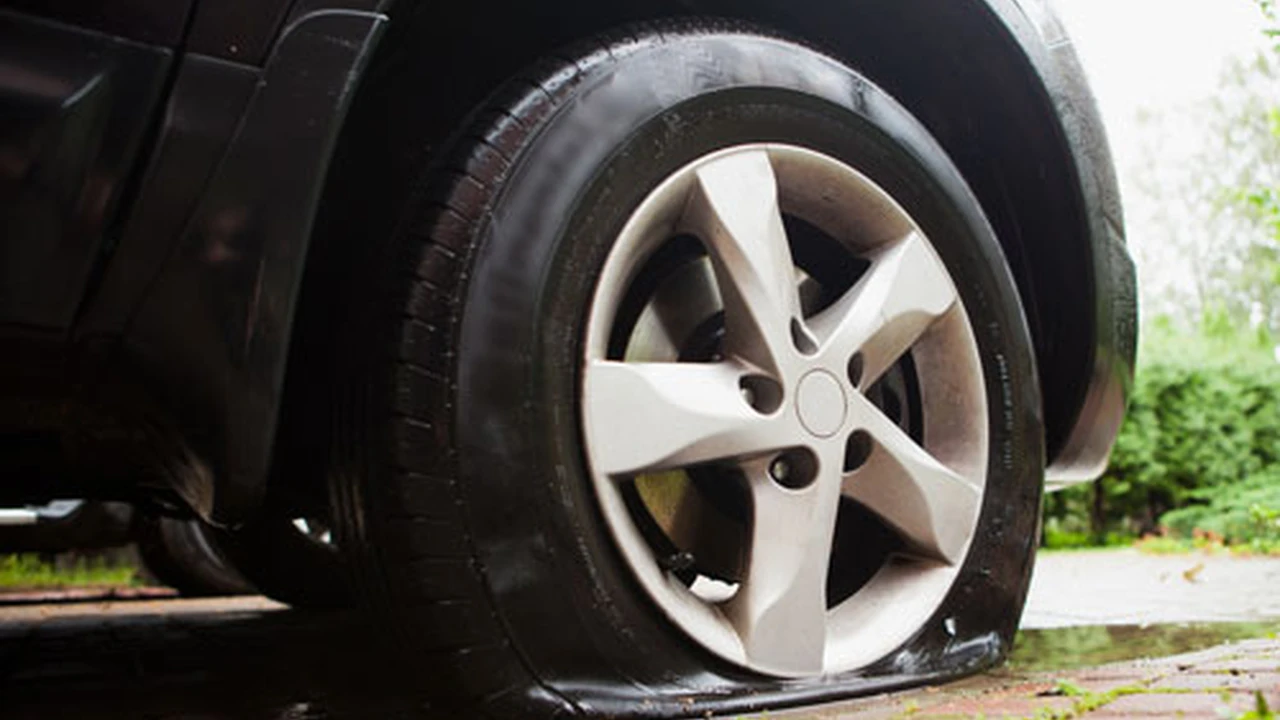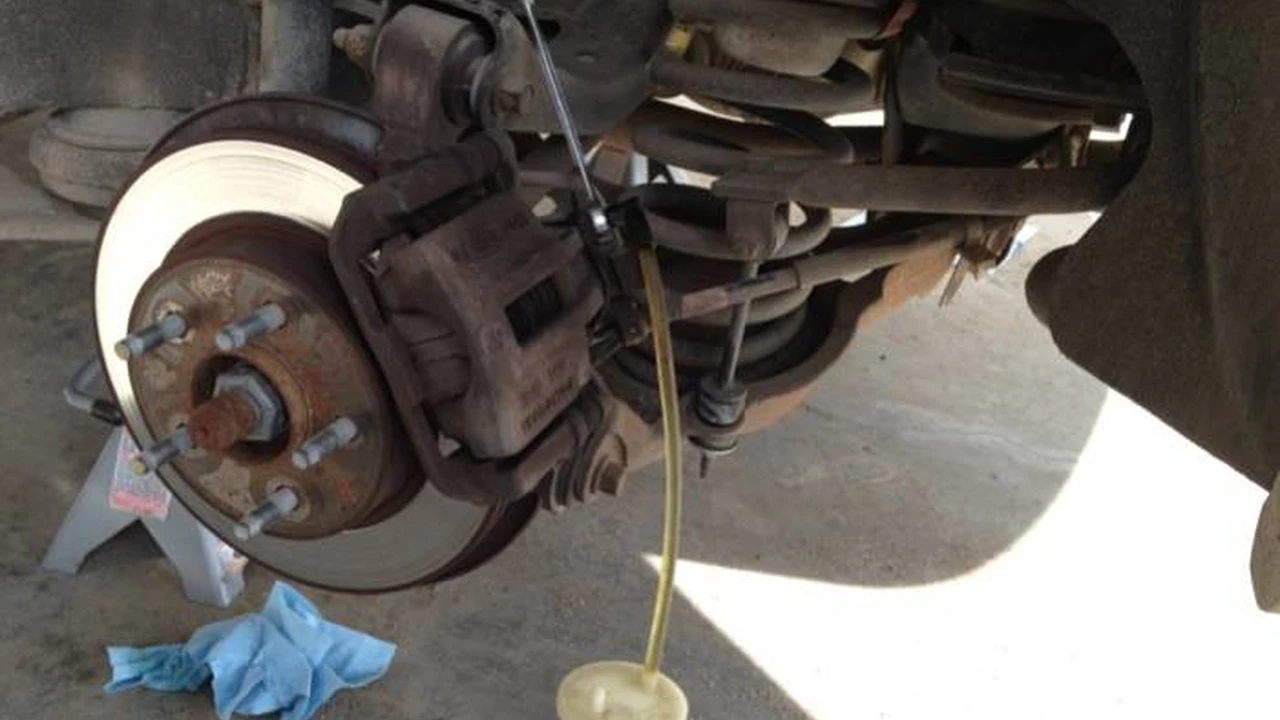How to Change a Flat Tire: A Step-by-Step Guide

Introduction to Flat Tires and Roadside Safety
Let's face it, getting a flat tire is a pain. It always seems to happen at the worst possible time, like when you're late for a meeting or stuck on a deserted highway. But knowing how to change a flat tire is a crucial skill for any driver. Not only can it save you money on roadside assistance, but it can also get you out of a potentially dangerous situation. This guide will walk you through the process step-by-step, ensuring you can confidently handle a flat tire emergency. First things first, safety is paramount. Before you even think about changing the tire, pull over to a safe location, away from traffic. Ideally, find a flat, stable surface. Turn on your hazard lights to alert other drivers. If you have reflective triangles or flares, place them behind your vehicle to provide extra warning. Remember, your safety is the top priority!
Gathering Your Tools and Preparing for the Change
Okay, you're safely parked and ready to tackle this flat. Now, let's gather the necessary tools. You'll need your spare tire (make sure it's properly inflated!), a lug wrench, a jack, and your owner's manual. Your owner's manual is your best friend here. It will tell you the exact location of your jack points on your vehicle. These points are reinforced areas designed to safely support the weight of your car. Using the wrong jack point can damage your car's frame. Don't skip this step! Once you have your tools, loosen the lug nuts on the flat tire. This is much easier to do *before* you jack up the car. Use the lug wrench and turn the nuts counterclockwise. You don't need to remove them completely at this stage, just break them loose. If they're really stubborn, you can try using your foot to apply more leverage. Be careful not to slip! Safety gloves are also a great idea here to protect your hands.
Lifting Your Vehicle Safely with a Car Jack
Now it's time to jack up the car. Consult your owner's manual to find the correct jack point. Position the jack securely under the designated point. Slowly and steadily raise the vehicle until the flat tire is off the ground. You only need to lift it high enough to remove the flat tire and install the spare. Make sure the car is stable before proceeding. If you have wheel chocks, place them behind the wheels that are still on the ground to prevent the car from rolling. Double-check that the jack is securely positioned and isn't wobbling. A stable jack is crucial for your safety.
Removing the Flat Tire and Installing the Spare
With the car safely lifted, you can now remove the lug nuts completely. Keep them together in a safe place, like your pocket or the hubcap, so you don't lose them. Carefully pull the flat tire off the wheel studs. It might be a bit stuck, so you might need to wiggle it a little. Now, align the spare tire with the wheel studs and push it onto the hub. Make sure the studs go through the holes in the spare tire. Hand-tighten the lug nuts in a star pattern. This ensures even pressure on the wheel. Once they're all snug, use the lug wrench to tighten them further, again in a star pattern. Don't overtighten them at this stage. We'll do a final tightening once the car is back on the ground.
Lowering the Vehicle and Final Tightening of Lug Nuts
Slowly lower the vehicle using the jack. Once the tire is touching the ground, but the full weight of the car isn't on it yet, give the lug nuts one final tightening with the lug wrench. Use a star pattern to ensure even pressure. Now, lower the car completely to the ground and remove the jack. Give the lug nuts one last check to make sure they're as tight as you can get them. Remember, lug nuts that are too loose can cause the wheel to come off while driving, which is extremely dangerous. Lug nuts that are overtightened can damage the wheel studs. A good way to tell if they are tight enough is by using a torque wrench. A torque wrench will allow you to apply a specific amount of pressure to the lug nuts, ensuring they are not too loose or too tight. Your owner's manual will specify the correct torque for your vehicle's lug nuts.
Stowing the Flat Tire and Tools for Safe Transport
Now that you've successfully changed the tire, it's time to stow the flat tire and tools. Place the flat tire in the spare tire compartment or trunk. Secure it so it doesn't roll around while you're driving. Make sure the jack and lug wrench are also securely stored. Leaving loose items in your car can be dangerous in the event of a sudden stop. Double-check that you haven't left anything behind, like the wheel chocks or reflective triangles. Now you're ready to get back on the road.
Checking Tire Pressure and Understanding Tire Wear
Before you drive too far, it's important to check the tire pressure of your spare. Most spares are temporary tires and require a higher inflation pressure than your regular tires. Check the sidewall of the spare tire for the recommended inflation pressure. You can use a tire pressure gauge to check the pressure and add air if needed. Most gas stations have air compressors available for public use. It's also a good idea to inspect the spare tire for any signs of damage, such as cuts or bulges. Also, pay attention to your other tires. Uneven tire wear can indicate a problem with your car's alignment or suspension. Regularly checking your tire pressure and wear can help you prevent future flats and ensure a safe and comfortable ride.
Temporary Spare Tires vs Full-Size Spare Tires: Choosing the Right Option
It is important to know what kind of spare tire you have. There are two main types of spare tires: temporary spares and full-size spares. Temporary spares, also known as "donut" tires, are smaller and lighter than regular tires. They are designed for temporary use only and should not be driven on for extended periods or at high speeds. Full-size spares, on the other hand, are the same size as your regular tires and can be used for longer periods. However, they may not match the other tires on your car, which can affect handling. The type of spare tire you have will depend on your vehicle. Check your owner's manual for more information. Temporary spare tires should only be used in emergencies and you should get your flat fixed or replaced as soon as possible.
Recommended Products for Tire Changing and Roadside Emergencies
Here are a few products that can make changing a flat tire easier and safer:
- Torque Wrench: A torque wrench ensures you tighten lug nuts to the correct specification, preventing over-tightening or under-tightening. The TEKTON 1/2 Inch Drive Click Torque Wrench is a popular and reliable option, priced around $30-$40.
Use Case: Ensures proper lug nut tightness to prevent wheel detachment or stud damage.
Pros: Accurate, easy to use, prevents over-tightening.
Cons: Requires knowing the correct torque specification for your vehicle.
- Roadside Emergency Kit: A kit containing essential items like jumper cables, a flashlight, a first-aid kit, and reflective triangles. The Lifeline AAA Premium Road Kit is a comprehensive option, priced around $40-$50.
Use Case: Provides essential supplies for various roadside emergencies.
Pros: Comprehensive, convenient, provides peace of mind.
Cons: Can be bulky, some items may not be needed.
- Tire Inflator: A portable tire inflator allows you to inflate your spare tire or top off your regular tires. The EPAuto Portable Air Compressor Pump is a compact and affordable option, priced around $25-$35.
Use Case: Inflates tires to the correct pressure, improving fuel efficiency and tire life.
Pros: Portable, easy to use, inflates tires quickly.
Cons: Requires a power source (car cigarette lighter).
- Wheel Chocks: Securely prevents your car from rolling while you are changing the tire. The MAXSA Escaper Buddy Traction Mats are a great and affordable option, priced around $20-$30.
Use Case: Prevents car from rolling while changing tire.
Pros: Easy to store, small, works in all weather conditions.
Cons: Must be placed correctly.
Comparing Different Types of Jacks: Scissor Jacks vs Hydraulic Jacks
When it comes to jacks, there are two main types: scissor jacks and hydraulic jacks. Scissor jacks are the most common type and are typically included with your car. They are relatively inexpensive and easy to use, but they can be slow and require more effort to operate. Hydraulic jacks, on the other hand, are more powerful and can lift heavier vehicles with less effort. They are also more stable and safer to use. However, they are more expensive and can be bulky. The type of jack you choose will depend on your budget and the type of vehicle you have. For most cars, a scissor jack will suffice. However, if you have a larger vehicle or prefer a more powerful jack, a hydraulic jack may be a better option. A good hydraulic jack, like the Arcan ALJ3T Aluminum Floor Jack, can cost anywhere from $150-$300.
Understanding Lug Nut Torque Specifications for Your Vehicle
As mentioned earlier, it's crucial to tighten your lug nuts to the correct torque specification. This specification is usually found in your owner's manual or on a sticker inside the driver's side doorjamb. The torque specification is measured in foot-pounds (ft-lbs) or Newton-meters (Nm). Using the wrong torque specification can lead to serious problems. If the lug nuts are too loose, the wheel can come off while driving. If they are too tight, the wheel studs can break. A torque wrench is the best tool for ensuring you tighten the lug nuts to the correct specification. Simply set the torque wrench to the specified torque and tighten the lug nuts until the wrench clicks.
What to Do After Changing a Flat Tire: Getting Your Tire Repaired or Replaced
Remember, a spare tire is meant to be a temporary solution. After changing a flat tire, it's important to get your flat tire repaired or replaced as soon as possible. If the tire is repairable, a tire shop can patch or plug the hole. However, if the damage is too severe, the tire will need to be replaced. It's also a good idea to have your other tires inspected to ensure they are in good condition. Driving on a damaged tire can be dangerous and can lead to another flat. Don't delay getting your tire fixed or replaced. Your safety depends on it.
:max_bytes(150000):strip_icc()/277019-baked-pork-chops-with-cream-of-mushroom-soup-DDMFS-beauty-4x3-BG-7505-5762b731cf30447d9cbbbbbf387beafa.jpg)






